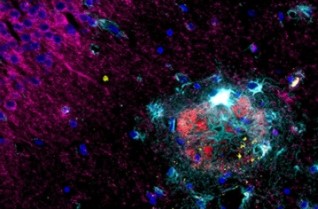
A groundbreaking study suggests that the malfunction of a specific signaling pathway, known as ApoER2-Dab1, may instigate the neuronal degeneration associated with sporadic, late-onset Alzheimer’s disease—the most prevalent form of the condition. The research team, led by experts at the NIA, discovered that when this pathway is disrupted in human brain neurons, it triggers an accumulation of phosphorylated tau—the variant implicated in forming tau tangles—and consequently leads to neuronal death in the initial stages of Alzheimer’s. These insights, detailed in the journal Acta Neuropathologica Communications, pivot us closer to understanding the disease’s genesis and highlight potential avenues for therapeutic interventions.
Apolipoprotein E (APOE), a protein that plays a pivotal role in fat transport within the body, connects to a variety of cellular receptors. The findings indicate that neurons amassing tau in the early stages of Alzheimer’s display the ApoER2 receptor. Yet, the reason for the selective degeneration of these neurons in late-onset Alzheimer’s remained elusive.
Building on previous research, it became evident that ApoER2 contributes to a complex, signaling cascade known as ApoER2-Dab1. This signaling system is integral for maintaining memory, cognition, and neuronal integrity through a multifaceted mechanism. Researchers were aware that the proteins constituting this intricate system have a propensity to conglomerate in specific brain regions during Alzheimer’s, signifying its potential role in the pathology of the disease.
Leveraging cutting-edge microscopy methods pioneered through a synergy between the NIA and the National Institute of Neurological Disorders and Stroke, the research collective stained 80 distinct protein profiles in postmortem cerebral samples from Alzheimer’s patients. These markers provided the researchers with microscopic precision in pinpointing the precise deposition sites of each protein within the brain’s architecture.
The investigative team ascertained that in the nascent phase of Alzheimer’s disease, five neuronal classes with heightened ApoER2 receptors on their membranes are prone to tau accumulation. Remarkably, the tau protein is merely one amongst a suite of ApoER2-Dab1 pathway proteins that amass as the disease progresses. This accretion also includes APOE, beta-amyloid, and other Alzheimer’s-related proteins within these specific neuronal clusters. The findings imply that a disruption in the ApoER2-Dab1 pathway offers a viable explanation for the selective neuronal degradation observed in Alzheimer’s disease.
